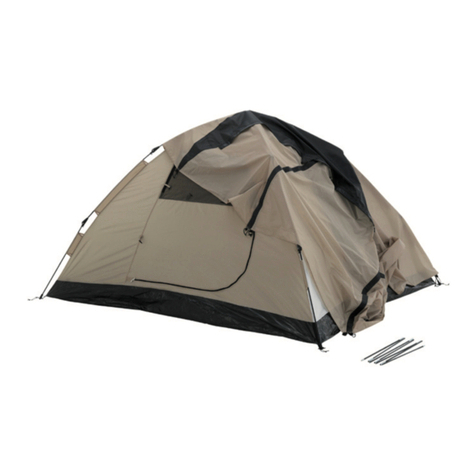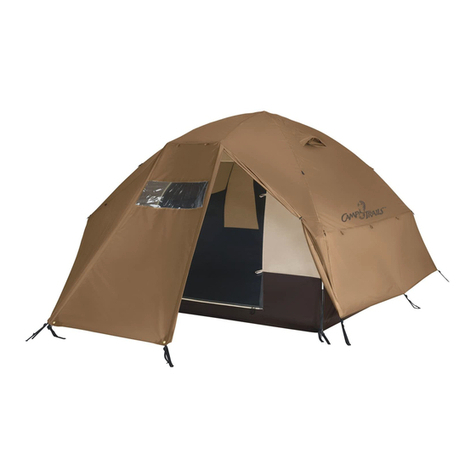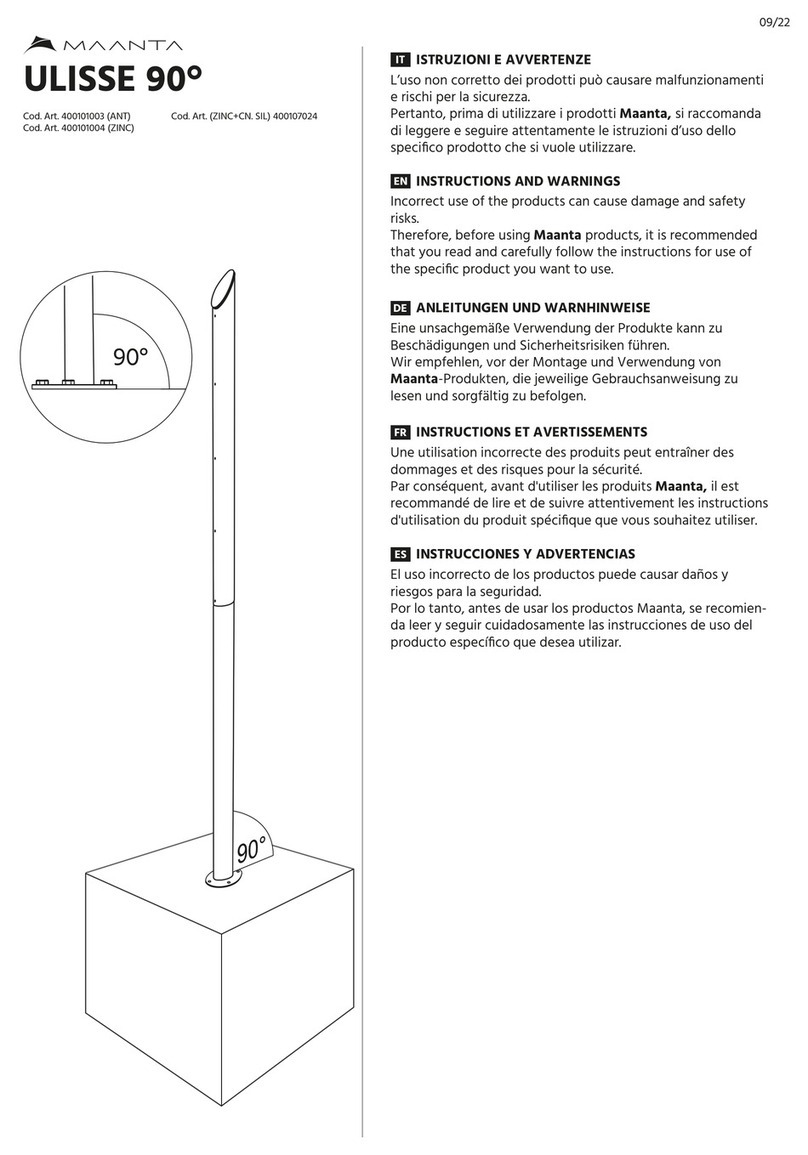
WARNINGS
Fire Safety:
KEEP ALL FLAME AND HEAT SOURCES AWAY FROM THIS PRODUCT FABRIC
The materials used in the manufacture of the Fire Water Repellent fabric meet the ame
resistance requirements of CPAI-84. It is not reproof. The fabric will ignite and burn if left in
continuous contact with any open ame or other sources of ignition. The application of any
foreign substance to the tent fabric may render the ame resistant properties ineffective.
Canvas tents are not for use with open re pits. Fire safety is the responsibility of the user. We
encourage you to educate yourself and practice vigilant re safety. Do not hesitate to contact
us if you have any questions or concerns at any time. It is imperative to acknowledge the
local rules and regulations and if you are unsure, to ask about camp site / local policies or
refer to the local civil protection/defense, forestry, re service websites for further information.
Always check local re restrictions prior to starting a re as rules and regulations may change
frequently throughout the year.
NOTE: White Duck Outdoors cannot be held liable for any damage or injury to persons or
property resulting from the use or misuse of re or ammable materials in or around our tents.
PRECAUTIONS:
The following precautions should be taken when camping:
Be certain that your tent is properly ventilated (especially if you decide to ignore the rst
warning and use a heater in your tent). Carbon monoxide is real. Don’t die by suffocation.
Vents and screens are built into the tent body.
Be sure to anchor your tent properly—this is not a free-standing tent—follow these instructions
for proper staking practices and ensure that all guylines & pegs are securely xed.
Be certain that children are supervised in and around the tent at all times.
Do not use candles, matches or open ames of any kind in or near a tent.
It is better to not cook inside a tent, but if you are, do not leave cooking unattended. Make
sure grills, cooking appliances and similar must not be placed nearer than 1 meter to tent
canvas. There should be no use of open res or glowing charcoal inside tents or near tent
canvas - re can spread very quickly. There should be no use of open res or glowing char-
coal inside tents or near tent canvas as there is a signicant risk from the buildup of Carbon
Monoxide (CO), particularly in a conned space inside the tent. All exible tubes and
couplings to the gas burner should be checked for leakage and that it is in good order
Build campres downwind and several meters away from a tent and be sure to fully extin-
guish campres before leaving a campsite or before retiring for the night.




























